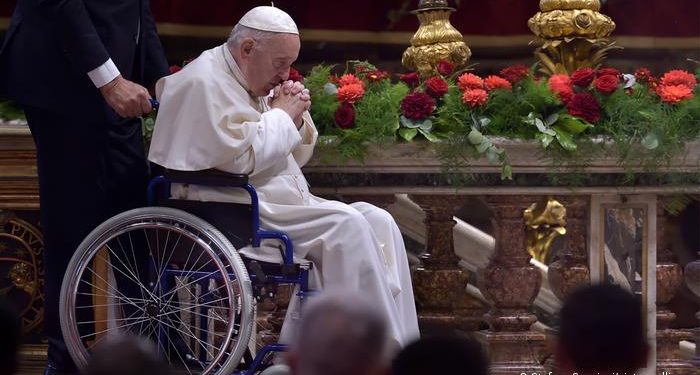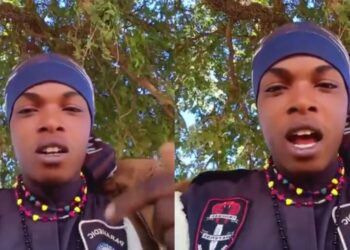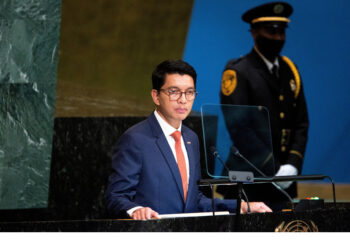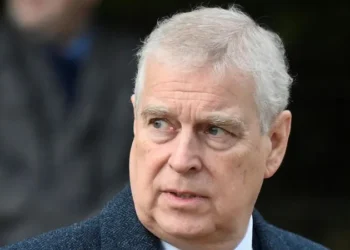During a landmark visit to Canada, the head of the Catholic Church apologized to Indigenous survivors for the “cultural destruction” at Church-run residential schools.
Pope Francis arrived in Canada on Sunday, for a historic visit where he personally apologized for the horrors of Catholic Church-run Indigenous residential schools.
He was met by Canadian Prime Minister Justin Trudeau and Mary May Simon, an Inuk who is Canada’s first Indigenous governor general.
On Monday, the pope’s first stop was in the town of Maskwacis, home to one of the country’s largest residential schools.
There spoke to an estimated of 15,000 people, including former students from across Canada.
Addressing victims in Maskwacis Monday afternoon, Pope Francis expressed his “sorrow,” and implored victims to practice forgiveness, healing and reconciliation toward the Catholic Church for the role it played in Canada’s indigenous school program.
The pontiff addressed the “indignation” and “shame” he feels over the memory of the notorious mistreatment of Canada’s indigenous children.
Why is the pope apologizing?
The pontiff has called his week long visit a “penitential pilgrimage” of “healing and reconciliation” to seek forgiveness on Canadian soil for the “evil” done to Native peoples by Catholic missionaries.
“This is a trip of penance. Let’s say that is its spirit,” he told reporters at the beginning of the flight from Rome to Canada.
In the decades spanning from late 1800s to the 1990s, nearly 150,000 First Nations, Metis and Inuit children children were sent by Canada’s government to 139 residential schools run by the church as part of a failed policy of forced assimilation.
The children were severed from their families, language and culture for months or even years.
Many faced physical and sexual abuse at the hands of headmasters and teachers while thousands are believed to have died because of neglect, malnutrition and disease.
Since last year, hundreds of remains of Indigenous children in unmarked graves have been discovered at the sites of former schools, with the national truth and reconciliation commission decrying “cultural genocide.”
In a shift from most papal tours, diplomatic protocols will take a back seat to personal encounters with First Nations, Metis and Inuit survivors.
Francis will end his trip with a visit to Iqaluit, Nunavut — the farthest north the 85-year-old has ever traveled — to make his apology to the Inuit community before heading back to Rome.
Indigenous Canadians have been both wary and hopeful ahead of the Pope’s visit.
“It is an understatement to say there are mixed emotions,” Chief Desmond Bull of the Louis Bull Tribe was quoted as saying by news agency AP.
Given the possibility of triggering memories, trauma experts will be deployed at all the events during Francis’ visit to provide mental health assistance for school survivors.
“For survivors from coast to coast, this is an opportunity — the first and maybe the last — to perhaps find some closure for themselves and their families,” said Chief Randy Ermineskin of the Ermineskin Cree Nation.
“This will be a difficult process but a necessary one,” he told AP.
Others see the visit by the head of the world’s 1.3 billion Catholics as something that is too little too late.
“I wouldn’t go out of my way to see him,” Linda McGilvery with the Saddle Lake Cree Nation near Saint Paul told the AFP news agency.
“For me it’s kind of too late, because a lot of the people suffered, and the priests and the nuns have now passed on.”
Chief Greg Desjarlais of the Frog Lake First Nation in northern Alberta, said the pope’s visit was stirring “mixed emotions across this country.”
A school survivor, Desjarlais expressed optimism at the pope’s arrival but added: “Our people have been traumatized. Some of them didn’t make it home. Now I hope the world will see why our people are so hurt.”










Discussion about this post